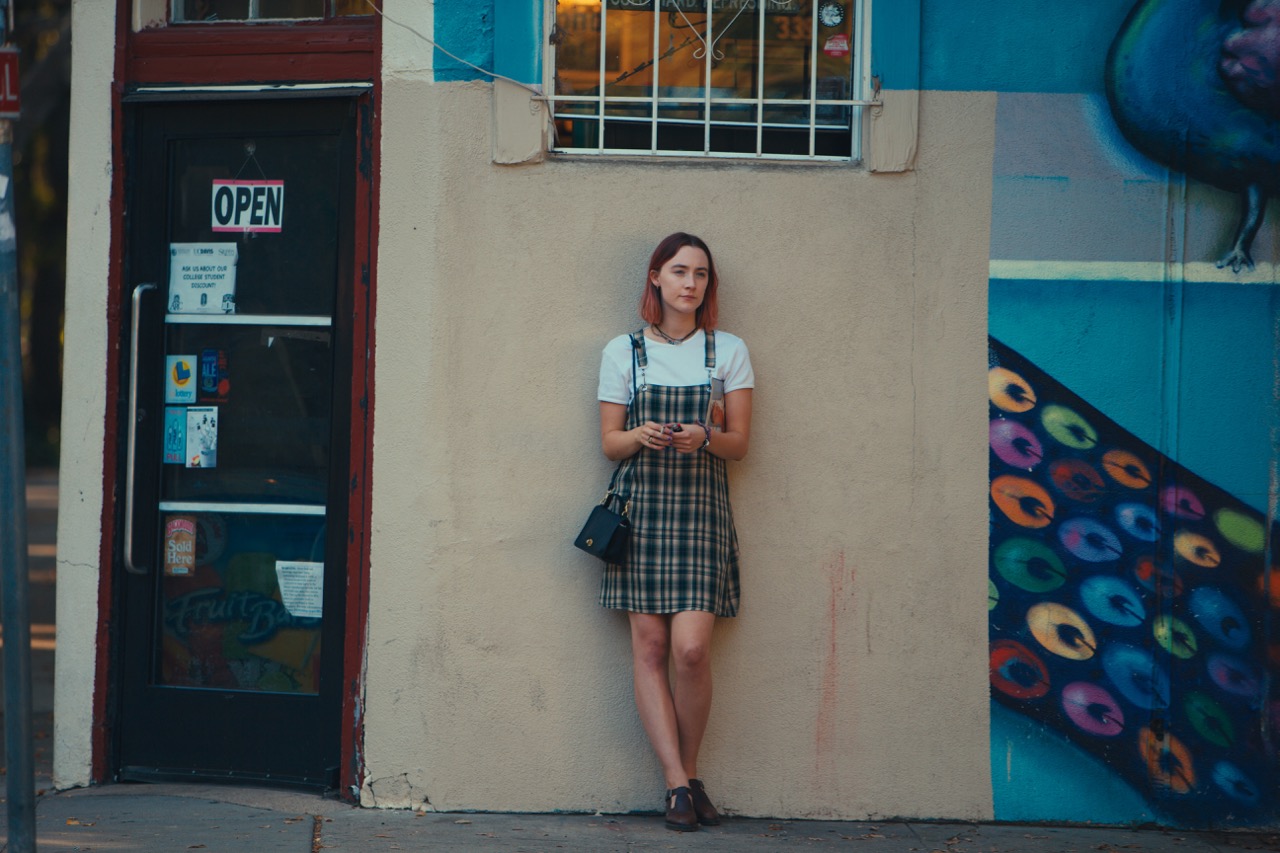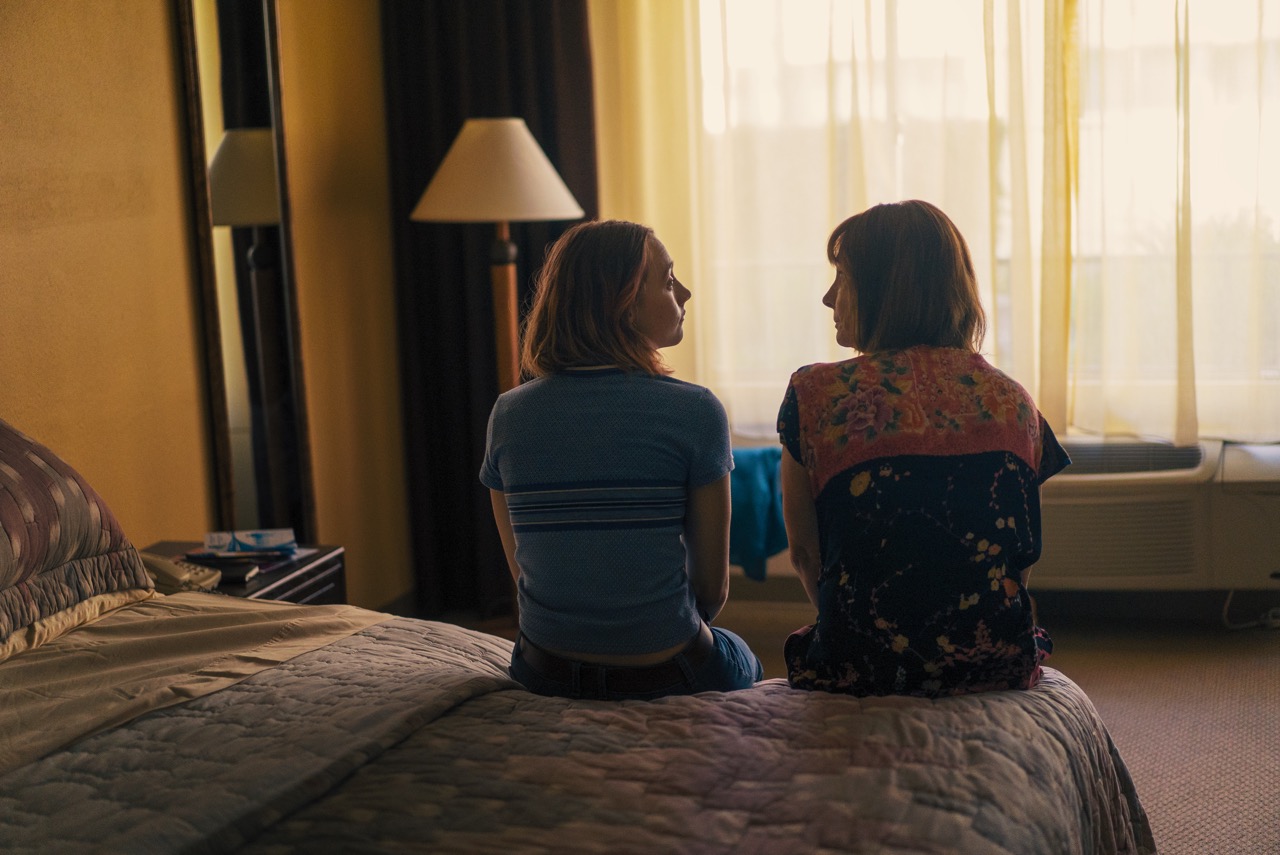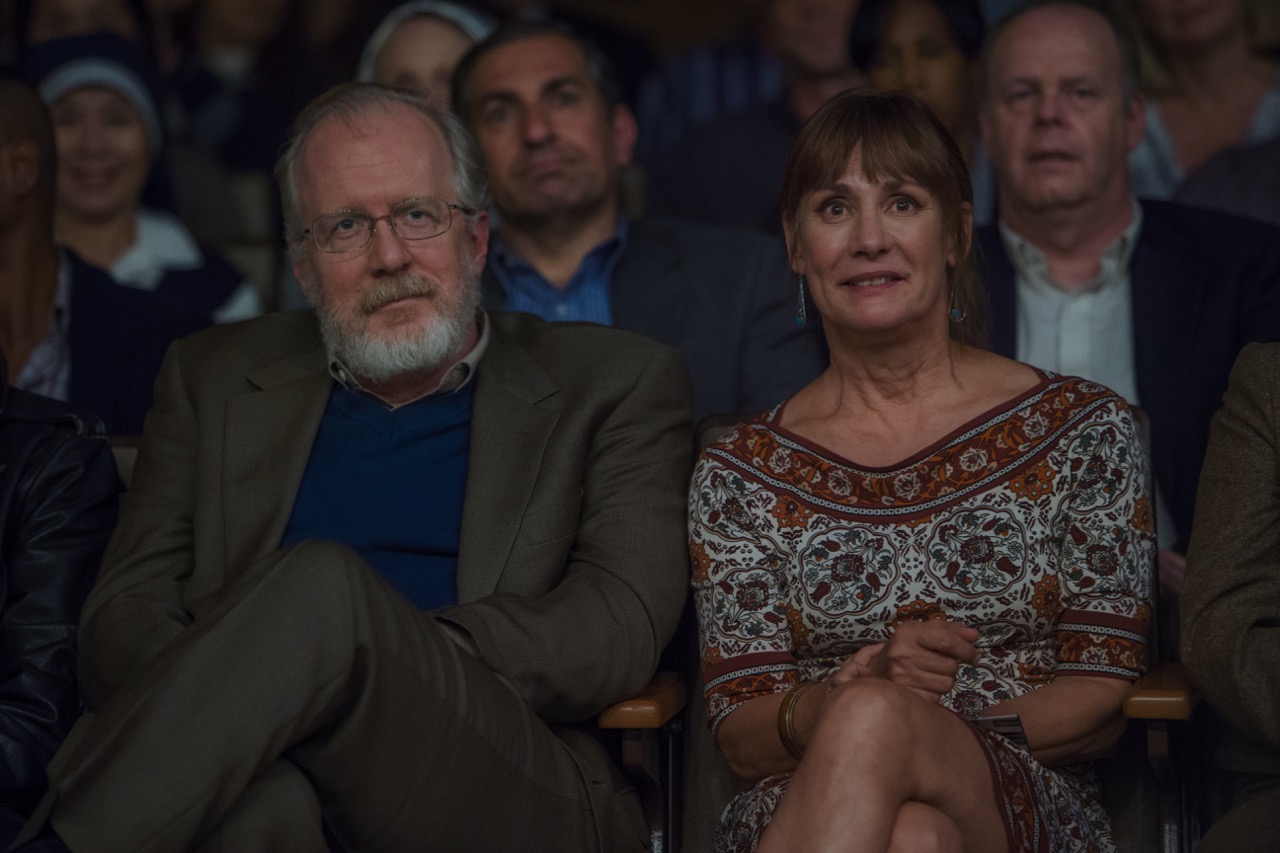 Melissa Anderson
Melissa Anderson
Daughter of the Central Valley: writer-director Greta Gerwig looks back at Northern California.

Saoirse Ronan in Lady Bird. Photo: Merie Wallace. Image courtesy A24.
Lady Bird, written and directed by Greta Gerwig,
opens November 3, 2017
• • •
The actress and writer Greta Gerwig sets her directorial debut, Lady Bird—a shrewd, warm, witty coming-of-age movie, which she also scripted—in Sacramento, where Gerwig was born and raised. She opens the film with a tart epigraph by Joan Didion, the California capital’s most famous daughter: “Anybody who talks about California hedonism has never spent a Christmas in Sacramento.”
The spirit of Didion, who throughout her career has been one of the Golden State’s most ambivalent ambassadors, imbues Lady Bird, a film invested in the piquant details that establish place, era, and mood—the specifics that have always distinguished Didion’s writing, especially her nonfiction. Gerwig’s movie, despite its lighter tone and much smaller scope, could alternately be titled Where I Was From, the name of Didion’s 2003 essay collection about reckoning with the enduring myths of the state that shaped her.
About that “I”: strictly speaking, Lady Bird isn’t autobiography. Gerwig was born in 1983; her teenage central character, Christine McPherson (Saoirse Ronan), whose peculiar self-sobriquet—the only name she’ll answer to—gives the film its title, is two years younger. Gerwig graduated from Barnard; Lady Bird, by film’s end, has just settled into her dorm at Columbia. Other Google-sourced bits about Gerwig’s immediate family and secondary-school education would appear to correspond with those of her heroine, whose life we follow from the late summer of 2002 to that of 2003. But any one-to-one correlation between Lady Bird and her creator is ultimately beside the point. The film succeeds not as a compendium of the minutiae of Gerwig’s adolescence but as an exacting recollection of a particular time and location—post-9/11, pre-iEverything Northern California—and as a sharp analysis of more universal, ageless themes, like the brutal struggles between mothers and daughters.

Saoirse Ronan and Laurie Metcalf in Lady Bird. Photo: Merie Wallace. Image courtesy A24.
That dyad is highly combustible in Lady Bird, a love-hate, push-pull, passive-aggressive cycle that Gerwig and the actors playing this primal pair establish with swift power. We first see the seventeen-year-old protagonist, her slightly ratty, middle-parted hair dyed cranberry, sharing a motel bed and peaceful slumber with her mom, Marion (Laurie Metcalf), a psychiatric nurse who often has to pull double shifts. They’re on their way back home from visiting colleges; in the car, somewhere on a desolate stretch of road in California’s Central Valley, the serene moments shared earlier have shifted to wounding remarks, high dudgeon, and histrionic gestures—in short, to an exchange that will likely be instantly recognizable to anyone who has ever been an adolescent and a daughter.

Tracy Letts and Laurie Metcalf in Lady Bird. Photo: Merie Wallace. Image courtesy A24.
The cause of that set-to is class and money, topics rarely addressed in teen-centered movies—at least since Amy Heckerling’s Clueless, her waggish Jane Austen update from 1995—but here explored with acuity. Lady Bird, about to start her senior year at the all-girls Immaculate Heart, despises California, announcing to her ma that she wants to apply to universities on the East Coast, “where culture is.” The effrontery outrages Marion; she and her husband, Larry (Tracy Letts), soon to be sacked from his computer-programming job, are already making enormous sacrifices to send their daughter to that private Catholic institution (not so much for religious reasons but owing to Mom’s abject terror of public high school). In Marion’s mind, UC Davis, twenty miles away, is the best her daughter should hope for.

Saoirse Ronan and Lucas Hedges in Lady Bird. Photo: Merie Wallace. Image courtesy A24.
“I’m so sorry I wanted more,” Lady Bird cries at the end of another of these gutting rows with her mother. One of the pleasures of Gerwig’s film is watching her protagonist figure out what she desires and then going after it. That may be a part in the fall musical, Merrily We Roll Along, the auditions for which occasion a hilarious montage of teen takes on Stephen Sondheim. Or a boy: first Danny (Lucas Hedges), a vulnerable Francophile, then Kyle (Timothée Chalamet), a Howard Zinn–reading bounder. Or a new best friend: Lady Bird temporarily abandons longtime pal Julie (Beanie Feldstein), whose home is even more modest than the McPhersons’ cramped ranch house (the ménage includes her older brother and his girlfriend), for a dim confidante several rungs higher on the socioeconomic ladder.

Saoirse Ronan and Beanie Feldstein in Lady Bird. Photo: Merie Wallace. Image courtesy A24.
Self-dramatizing, occasionally exasperating, Lady Bird is always searching, for answers to questions both mundane (“Who’s Jim Morrison again?” she inquires of her sibling; “Do you know if Sarah Lawrence is actually in New York?” she queries Julie) and cosmic (“Do you believe in God?” she asks a guy at a Columbia party, seconds after meeting him). The Irish Ronan, not too many years older than her character, shades Lady Bird’s guilelessness with grit and self-deprecation—an inviolate core shared by Eilis, the Hibernian immigrant the actress played in Brooklyn (2015), a lush 1950s period piece.
Gerwig’s film is a period piece, too: of classroom bulletin boards with “9/11 NEVER FORGET” spelled out in construction paper, of just a few kids (the rich ones) having cell phones with hinges, of Justin Timberlake’s “Cry Me a River” setting the mood for a party. But these signs and signals never clutter the film, as they did in last year’s 20th Century Women, Mike Mills’s ephemera-dense tribute to his late-1970s youth, in which Gerwig plays a key supporting role.
Lady Bird is an assured first film, confidence that may come from the fact that some of its motifs were sketched out not so long ago. In Frances Ha (2012), the first of two movies to date that Gerwig has co-written with her romantic partner, Noah Baumbach, who directed, she plays a twenty-seven-year-old struggling to, among other things, make it as a dancer in New York. Frances goes home to Sacramento for Christmas; she’s joyfully greeted at the airport by her parents, who are played by Gerwig’s own. Frances’s long soak in the tub of her childhood home is interrupted by her mother’s pounding on the door to get into the bathroom. A similar scene takes place in Lady Bird, in which five grown (or nearly grown) people must share one WC. Through achronological magic, Frances is both a precursor to Lady Bird and the twenty-something she might become. Both are some versions of Gerwig and perhaps, however remotely, of Didion, a woman who also came East, then famously returned West, only to come East once more—and who wrote, in 1976, of the place where she grew up, “I am easy here in a way that I am not easy in other places.” It’s a sentiment that chimes with Lady Bird’s own feelings about Sacramento, an attachment that she can admit to only once she’s almost three thousand miles away.
Melissa Anderson is the film editor of 4Columns. From November 2015 until September 2017, she was the senior film critic for the Village Voice. She is a frequent contributor to Artforum and Bookforum.